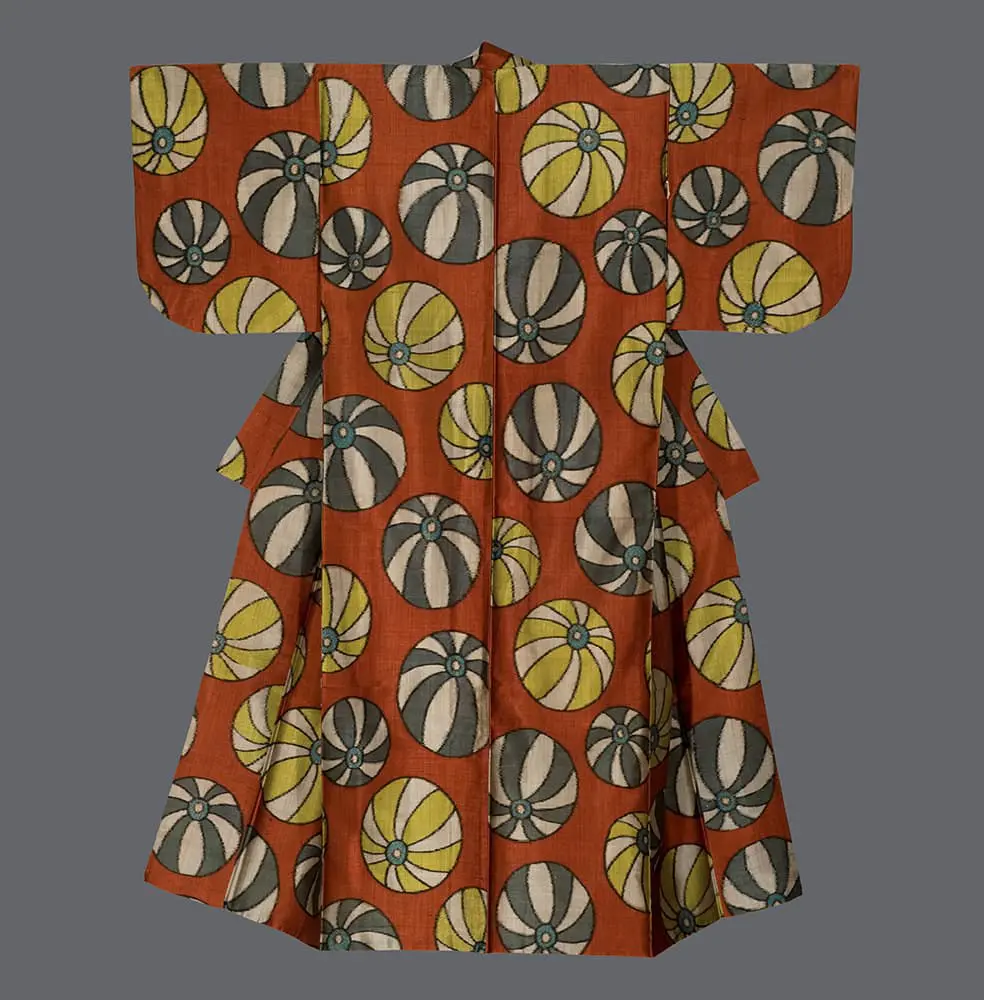This vibrant meisen kimono exemplifies the democratization of Japanese textile artistry during the interwar period, showcasing the bold geometric exuberance that characterized modern Japanese design through its dynamic array of temari ball motifs scattered across a warm rust-orange ground. The temari patterns, rendered in varying combinations of cream, yellow, sage green, and charcoal gray, display the characteristic radial symmetry of these traditional hand-balls, each one featuring precise geometric divisions that create mesmerizing optical effects. The meisen technique, which employed innovative resist-dyeing methods on silk threads before weaving, allowed for the crisp definition and vibrant color saturation that gives this textile its striking visual impact and affordability for middle-class consumers.
The temari motif carries rich symbolic meaning in Japanese culture, representing friendship, loyalty, and good fortune, as these decorative balls were traditionally given as precious gifts between loved ones. The geometric patterns within each sphere echo the mathematical precision found in traditional Japanese crafts, while their scattered, seemingly random placement across the fabric reflects modernist design principles that embraced asymmetry and visual dynamism. The choice to render these auspicious symbols in such bold colors and graphic clarity speaks to the optimistic spirit of 1930s Japan, when traditional motifs were being reinterpreted through contemporary aesthetic sensibilities that valued both cultural continuity and progressive innovation.
The technical achievement of this meisen textile demonstrates the sophisticated industrial capabilities that had developed in Japanese textile production by this period, where mechanized processes could achieve effects previously possible only through labor-intensive hand techniques. The precise registration of the complex geometric patterns within each temari, combined with the overall compositional harmony of the scattered motifs, reveals a mature understanding of how traditional symbolic language could be translated into modern design vocabularies that appealed to urban consumers seeking garments that were both culturally meaningful and aesthetically current.
Measuring 48 inches (122 cm) from sleeve-end to sleeve-end, it stands at 58 inches (147 cm) in height.
.avif)






